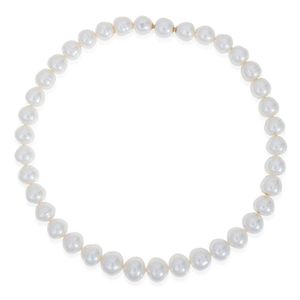Etruscan Style Gold Collar Necklace
You must be a subscriber, and be logged in to view price and dealer details.
Subscribe Now to view actual auction price for this item
When you subscribe, you have the option of setting the currency in which to display prices to $Au, $US, $NZ or Stg.
- Victorian Period - The Victorian period of furniture and decorative arts design covers the reign of Queen Victoria from 1837 to 1901. There was not one dominant style of furniture in the Victorian period. Designers used and modified many historical styles such as Gothic, Tudor, Elizabethan, English Rococo, Neoclassical and others, although use of some styles, such as English Rococo and Gothic tended to dominate the furniture manufacture of the period.
The Victorian period was preceded by the Regency and William IV periods, and followed by the Edwardian period, named for Edward VII (1841 ? 1910) who was King of the United Kingdom and the British Dominions and Emperor of India for the brief period from 1901 until his death in 1910. - Etruscan - The Etruscans were pre-Roman people who mainly inhabited central and part of north Italy, in the area corresponding to Tuscany. The civilisation was active from around 700BC until their assimilation into the Roman Empire in around the 4th century BC.
With the increasing importance of Rome they were virtually wiped out, for Rome would not tolerate a competitive civilization. Many Etruscan rituals and aspects of their culture were taken over by Rome: Etruscan funeral games became the Roman gladiatorial combats and the science of divination came from the Etruscans.
They were also incredible craftsmen in precious metals. It was said that the famous Etruscan Sibylline books of received wisdom were burnt by Rome and that the emperor Claudius was the last person who could read Etruscan, a language that is still largely undeciphered.
Black and red figure vases attributed to the Etruscans provided the basis for the Etruscan style of furniture, decorative arts and decoration first seen in Louis XVI furniture in the 1760s, and then adapted by Robert Adam in England.
The style was characterised by the use of the red and black colourways of the vases, together with motifs such as lions, birds, sphinxes and griffins.
Josiah Wedgwood was inspired by the civilisation, and in 1769 he opened his new ceramic factory at Stoke-on-Trent, naming it "Etruria Works". Using the modeller John Flaxman, he produced wares based on what was thought at the time, to be Etruscan themes.
At the end of the 18th and in the early 19th century, Etruscan themes were seen in glass, jewellery and furniture, and in the 1820s Coalport China produced a range of wares based on the Etruscan themes.
Around that time it was discovered that the archaeological treasures attributed to the Etruscans were of Greek origin, but the description of them as "Etruscan" continued. - Carat - A carat (abbreviated "ct") is a unit of measurement used to describe the weight of a diamond or other gemstone, and separately is a unit of measurement used to describe the weight of precious metals such as gold,.
For gemstones, one carat is equal to 0.2 grams or 200 milligrams. The weight of a diamond is one of the Four Cs (along with cut, colour, and clarity) that are used to determine a diamond's value.
It is important to note that a diamond's weight does not necessarily correspond to its size. A diamond's cut, which affects how well it reflects light, can make a diamond of a lower weight appear larger than a diamond of a higher weight. Additionally, the carat is not the only factor to determine the value of a diamond, other factors such as clarity, colour and cut are important too.
In the gold industry, the purity of gold is measured in carats (abbreviated "ct"), with 24 karats being pure gold and lower carat numbers indicating a lower purity level. So, for example, 18 carat gold is 18/24 or 75% pure gold, and 12 carat gold is 12/24 or 50% pure gold.
This item has been included into following indexes:
Visually similar items

An Italian gold necklace, the stylised domed panels diagonally set in 18ct gold, total length 390 mm

A strand of South Sea pearls by Paspaley, comprising thirty eight Baroque pearls of creamy white hues measuring 11.0 mm to 14.0 mm, finished with a concealed clasp set with a single brilliant cut diamond, total length 440 mm, with box, pouch and papers

A graduated cultured pearl necklace; 11.7 - 12.mm round pearls of silver grey colour with good lustre to a 9ct gold ball clasp. Length 45 cm

A cultured pearl necklace, composed of twenty-nine cultured pearls of white and golden hue, measuring approximately 13.7 mm-11.9 mm, with diamond-set textured ball clasp, clasp mounted in 18 carat white gold, length 42.5 cm
